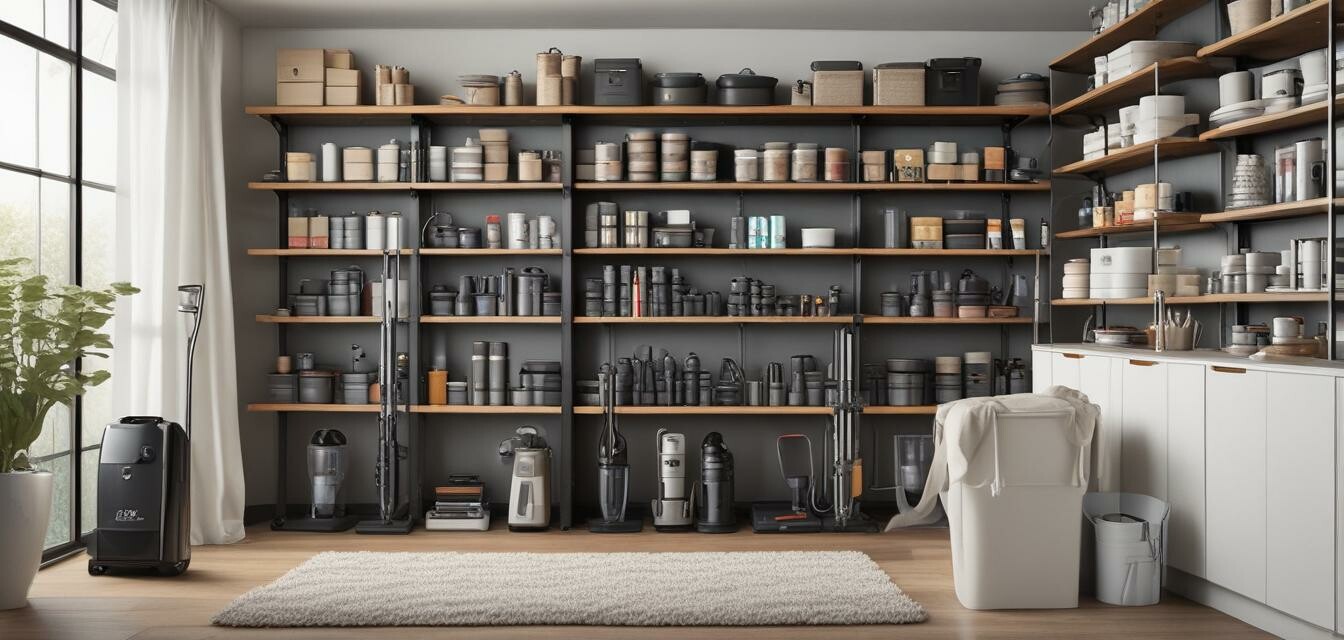
This article was generated using AI and is based on real customer reviews from the Amazon platform. It contains affiliate links, meaning we may earn a commission—at no extra cost to you. As Amazon Associates, we earn from qualifying purchases.
Best practices for storing your vacuum
Key Takeaways
- Clean your vacuum before storage to avoid buildup of allergens.
- Store your vacuum in a dry place to prevent mold and mildew.
- Keep the vacuum upright to preserve its parts.
- Ensure all accessories are stored with the vacuum for easy access.
- Regular maintenance helps prolong your vacuum's life.
When it comes to keeping your home free from allergens, proper vacuum storage is just as crucial as regular cleaning. A well-maintained vacuum can significantly help reduce allergens in your living space, but storing it improperly can lead to damage and decreased efficiency. This article outlines best practices for vacuum storage, ensuring its longevity and effectiveness.
Why Proper Storage Matters
Properly storing your vacuum contributes to its lifespan and performance. A vacuum that is not stored correctly may suffer from:
- Increased wear and tear.
- Dust and allergen buildup in parts.
- Potential moisture damage.
Best Practices for Vacuum Storage
1. Clean Your Vacuum Before Storing
Before putting your vacuum away, it’s vital to clean it thoroughly. This includes:
- Emptying the dust container or replacing the bags.
- Cleaning or replacing filters.
- Checking for blockages in the hose and brush rolls.
Doing this prevents allergens from accumulating, helping to maintain a healthier environment.
2. Choose the Right Storage Location
Optimal storage conditions are fundamental. Here are factors to consider:
- Dryness: Ensure the storage area is dry to prevent mold build-up.
- Temperature: Avoid extreme temperatures that could damage internal components.
- Accessibility: Store the vacuum where it’s easily reachable for regular use.
3. Keep Your Vacuum Upright
Storing your vacuum upright is essential for maintaining its structure. This practice can prevent:
- Damaging or bending parts.
- Denting the vacuum body.
If your vacuum is bulky or heavy, ensure it is stable and won’t tip over.
4. Organize Accessories and Attachments
To keep your vacuum effective, store all accessories with it. Consider the following tips:
- Use a dedicated storage bin or holder for attachments.
- Label each accessory for quick identification.
- Group similar items together to avoid misplacement.
5. Perform Regular Maintenance Checks
To extend the lifespan of your vacuum, schedule regular maintenance checks. This can include:
- Inspecting and cleaning the hose and brush.
- Replacing filters based on the manufacturer's recommendations.
- Ensuring all parts are functioning properly.
Regular upkeep will help keep the vacuum performing optimally and ready to tackle allergens.
Common Storage Mistakes to Avoid
While storing your vacuum, there are common pitfalls to avoid. Here are some mistakes:
| Mistake | Consequence |
|---|---|
| Storing a dirty vacuum | Allergen buildup and foul odors |
| Leaving accessories loose | Loss or damage to components |
| Storing in a damp environment | Mold growth and potential vacuum damage |
| Ignoring maintenance | Reduced performance over time |
Pros
- Increased lifespan of your vacuum.
- Improved performance and efficiency.
- Lower risk of allergens spreading.
Cons
- Requires time and effort for maintenance.
- Investing in storage solutions may incur additional costs.
Helpful Resources
For more tips and guides on vacuum maintenance, consider visiting our other articles:
- Maintenance Tips: Discover fundamental tips for keeping your vacuum in great condition.
- HEPA Filter Vacuums: Learn about the benefits of HEPA filter vacuums in reducing allergens.
- Buying Guides: Find the right vacuum for your needs.
- Bagless Vacuums: Explore the convenience of bagless options.
- Upright Vacuums: Check out various upright vacuum options.
Conclusion
By following these best practices for vacuum storage, you ensure its longevity and maintain its effectiveness in fighting allergens. Regular cleaning and maintenance are essential components of proper storage, ultimately aiding in creating a healthier living space. With these strategies, your vacuum will be ready when you need it, providing the performance you expect. Stay proactive in your vacuum care, and enjoy a cleaner, allergen-free home.